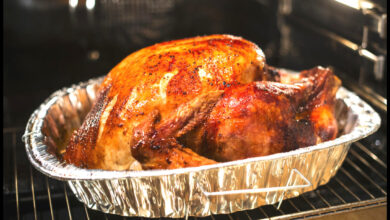16 exercises to strengthen and tone your hamstrings
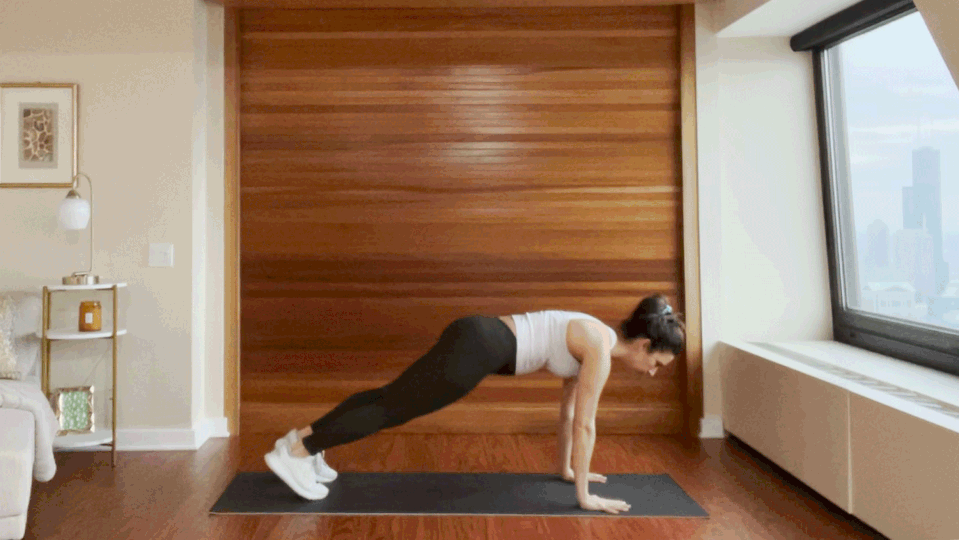
Welcome to Start TODAY. Sign up for our Start TODAY newsletter to receive daily inspiration sent to your inbox — and join us on Instagram!
You likely incorporate hamstring workouts into your routine with the goal of toning and strengthening the legs. And while that is a benefit of working the muscle group, it’s far from the only one.
The hamstring muscles are actually crucial for almost all of our daily movements. The hamstrings contribute greatly to how powerful you are when walking, jumping or running, so having strong hamstrings can also help both athletic performance and everyday life. Not only that, but they affect both the knee and the hip, so keeping them healthy contributes to the health and stability of both of those joints. Tightness in the hamstrings can also contribute to low back pain.
Here’s everything you need to know about the hamstring muscles and the 16 best hamstring exercises to add to your workout routine.
What are the hamstring muscles?
Your hamstring muscles run down the back of each thigh, from the hip to the knee. You use these muscle to perform most basic everyday movements, like standing, walking, bending the knees and squatting down to pick something up.
The hamstring muscles include: biceps femoris, semimembranosus and semitendinosus. They work together to help you flex (bend) your knees and extend your hips. Basically any movement that you do with your legs is initiated or supported by the hamstrings.
What causes weak hamstrings?
If you spend a lot of time sitting during the day, the hamstrings can get overstretched and weaken — because you’re literally sitting on them. Weakness in the hamstrings can contribute to knee, hip and low-back pain.
Most people tend to be quad-dominant, meaning that their quadriceps muscles are stronger than their hamstrings. While it’s normal for the larger muscles of the quadriceps to be a bit stronger than the hamstrings, too much of a strength imbalance in the legs can create problems — like instability in the knee joint that can lead to pain or injury.
What happens if you have tight hamstrings?
Tight hamstring muscles can lead to pain and injury in the knee, hip and lower back. But if your hamstrings are tight, it doesn’t necessarily mean that they are strong. So, while it may seem counter-intuitive, you still need to exercise your hamstrings if they’re tight. But you also need to stretch. Yoga and active, isolated stretching are great for stretching the hamstrings.
What causes hamstring muscle pain?
Hamstring muscle pain can be caused by activities that strain or overstretch the muscles, like sudden movements, running or lifting heavy weights. Signs that it’s time to rest and stop working the area include sharp pain, swelling, difficulty walking or muscle weakness. Resting the muscles, applying ice and gentle stretching can help alleviate the pain.
Doing regular strength training that works the hamstrings, as well as regularly stretching the hamstrings, can help prevent pain and injury. Strength training can be done every other day, giving the muscles a day in between to rest and repair. Stretching can be done daily.
Best hamstring exercises
As a certified personal trainer and Pilates instructor, I recommend incorporating hamstring exercises into your workout routine to help improve your overall fitness and mobility. Whether you’re looking to improve your athletic performance, tone your lower body or just want to feel stronger or more comfortable in everyday movement, these exercises will get the job done — no equipment needed!
But first, a tip when working your hamstrings: start slow. Hamstring injuries are common so be sure to warm up properly, focus on quality over quantity, and stretch afterward to avoid injury.
Downward dog
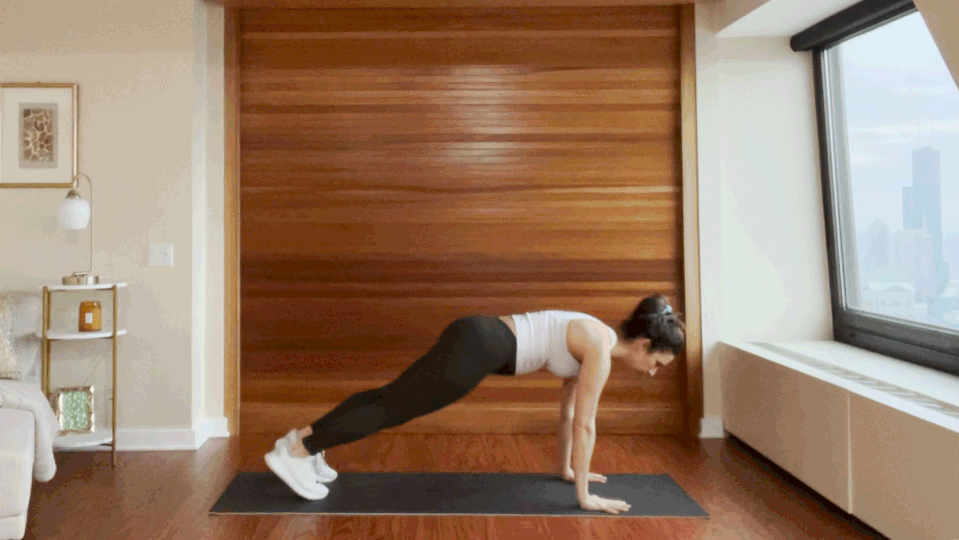
Start in a plank position with your shoulders over your wrists. Pull your naval in toward your spine and reach your butt up toward the ceiling. Form a “V” with your body with your heels reaching down toward the ground. Press down through your toes and your fingers to stretch the legs and the underarms. Bend one knee and then the other knee. Hold the stretch for 3 breaths.
Legs up the wall
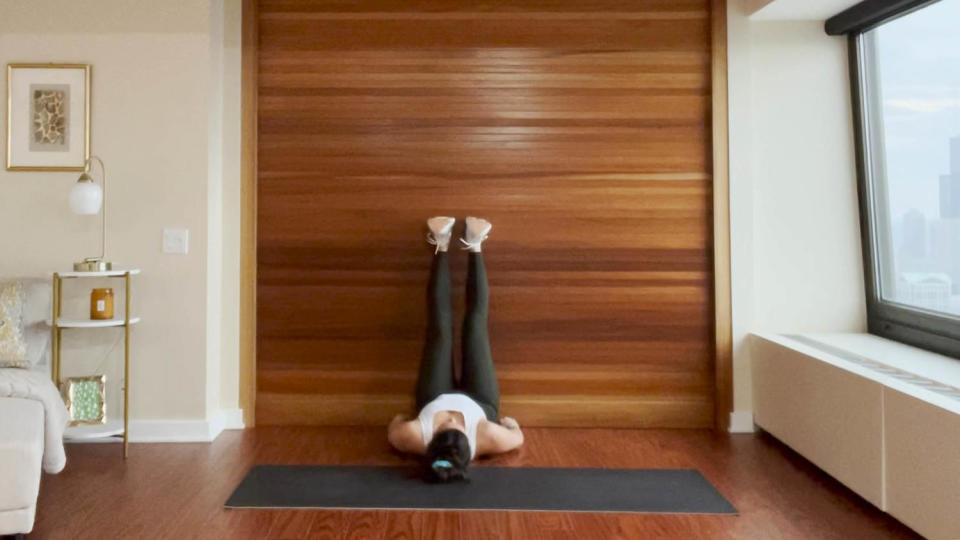

Sit down next to a walk. Slowly lie down and scoot your bottom toward the wall. Extend your legs straight up along the wall. Try to straighten your knees, but if your hamstrings are tight you can keep your knees slightly bent. Flex your feet and squeeze your quads. Feel a stretch behind the legs in the hamstrings.
Good mornings
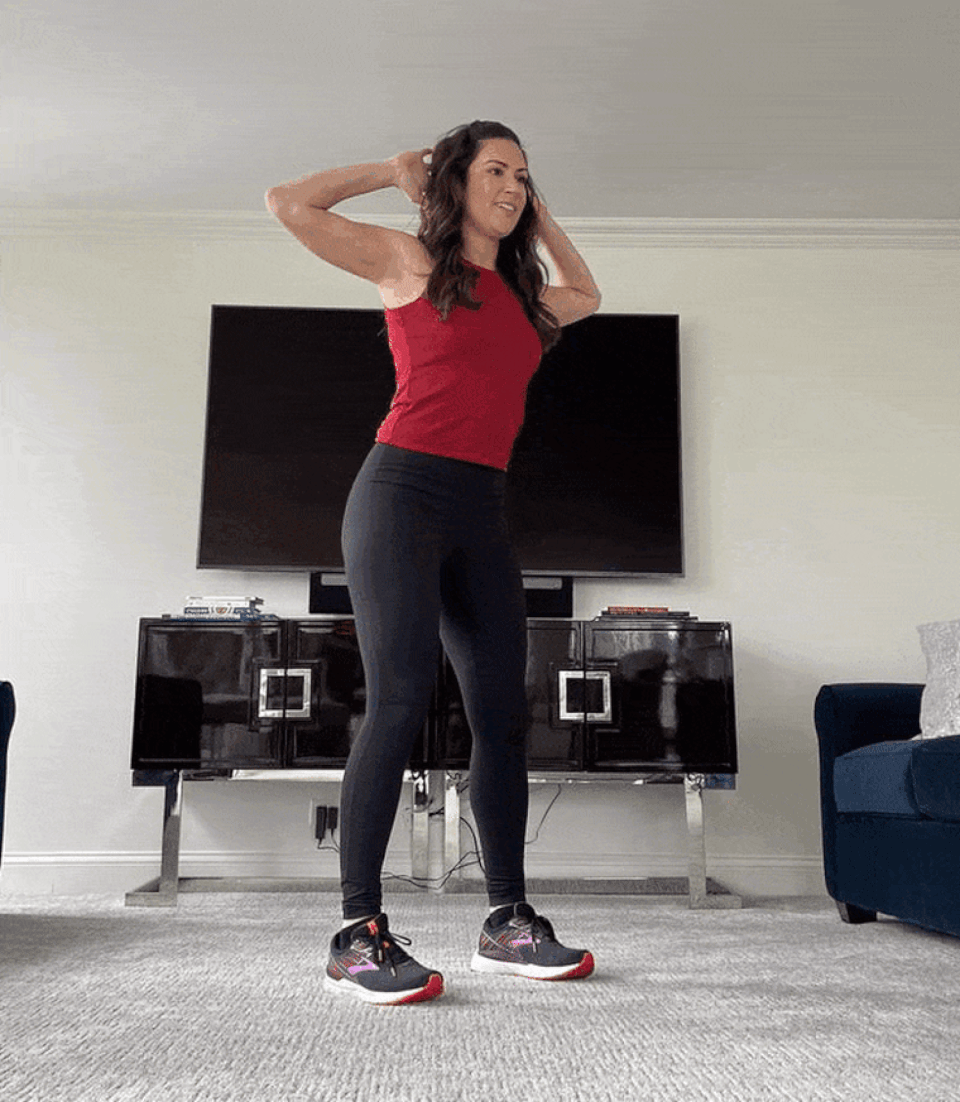

Start with your feet shoulder-width apart, with your hands placed behind your head. Focus on keeping your shoulders back and your core muscles engaged. Take a deep breath in and on the exhale, hinge at the hips, bending your chest toward the floor until your body forms an upside-down “L” shape. You should feel a slight stretch in your hamstrings. If you feel any pain or uncomfortable pulling, you’ve lowered too far! Slowly move back into a standing position on your exhale. Squeeze the glutes and hamstrings to return to standing tall. Repeat.
Crab walk
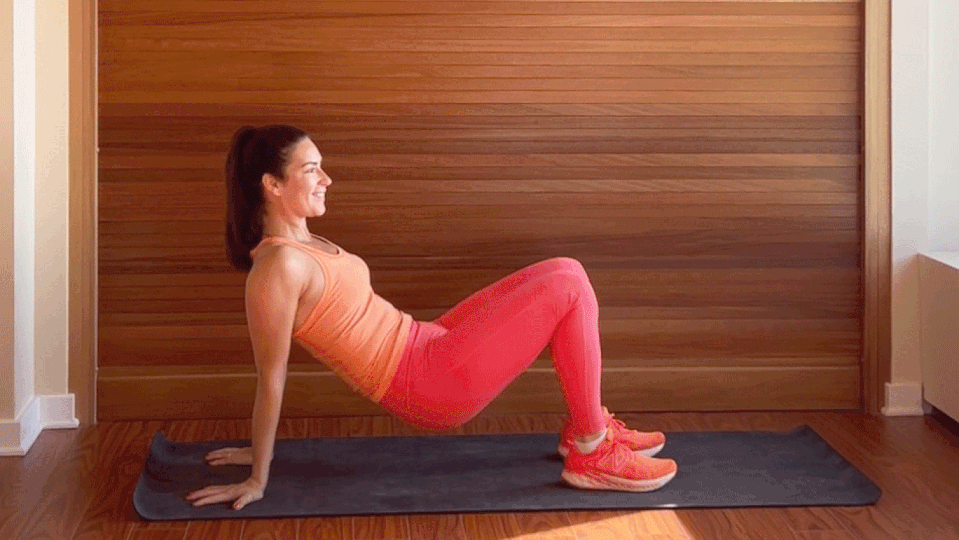

Start sitting on the ground with your knees bent. Place your hands two inches behind you with your palms flat on the ground and your fingers pointing away from your body. Step your right foot forward as you simultaneously move your left hand forward. Then step your left foot forward as you move your right hand forward. Continue walking forward for a total of 10 reps (or as far as your space allows). You can also try walking backwards as well!
Reverse lunge
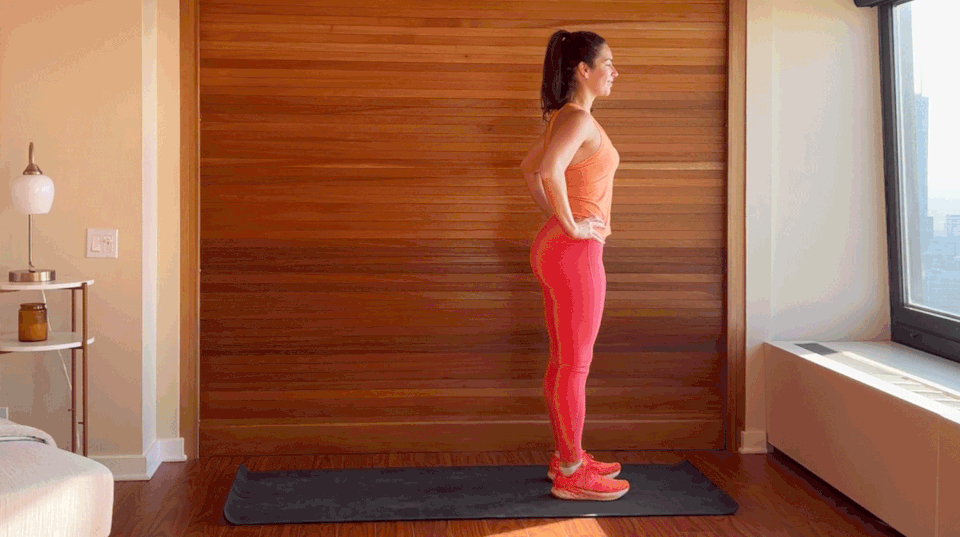

Stand with your feet hips-width apart. Step the right foot back into a lunge position. Engage your abs and lower your right leg down until your knee almost touches the floor. Both knees should be at a 90-degree angle. Step forward to the starting position and then repeat 10 times before switching sides.
Single leg deadlift
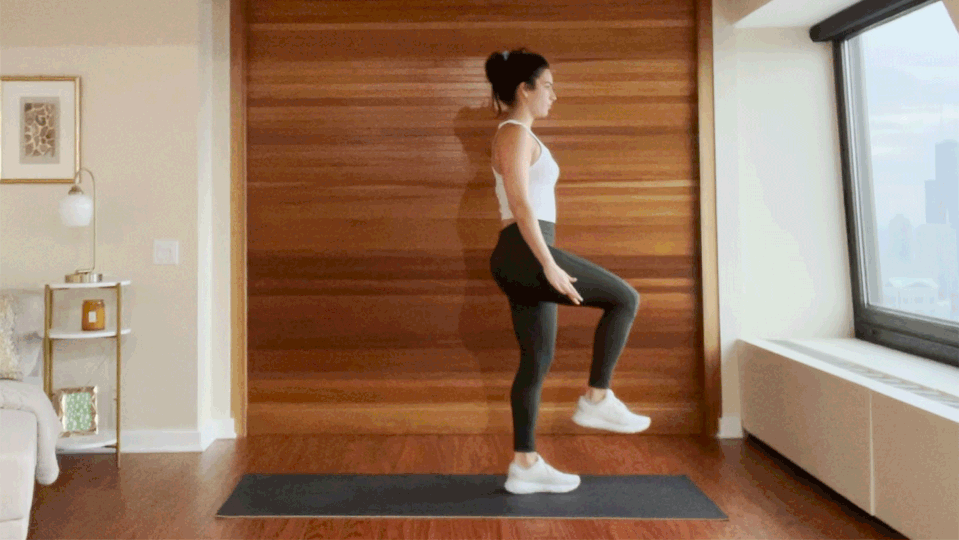

Stand with your feet as wide as your hips. Put your weight into your left leg and come up on to your right toe, using it as a kickstand for balance. Begin to hinge at your waist, keeping your left knee soft. Place your hands on your hips for balance. Continue to hinge forward as you slowly lift your right leg up and back until your body forms a straight line from head to toe. Ensure that your hips stay square to the ground. Pause, and then return to the starting position and repeat.
Standing reverse leg lifts
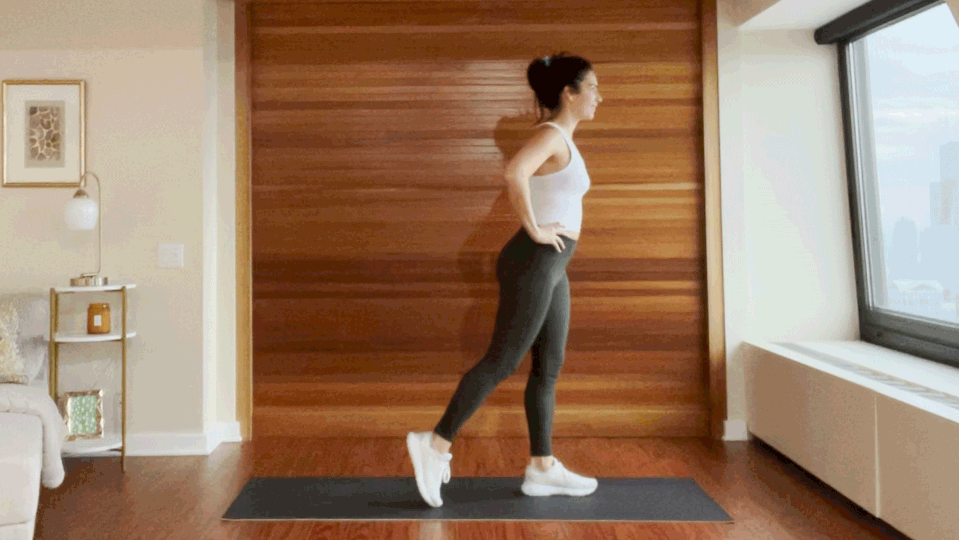

Stand tall and shift your body weight to your right leg. Lift your left leg straight back while you contract the glute, raising it to about a 45-degree angle from the standing leg. Slowly lower the leg back down and perform 10 times on this side. To switch sides, shift your body weight to your left leg, and raise your right leg back and up.
Side lunge
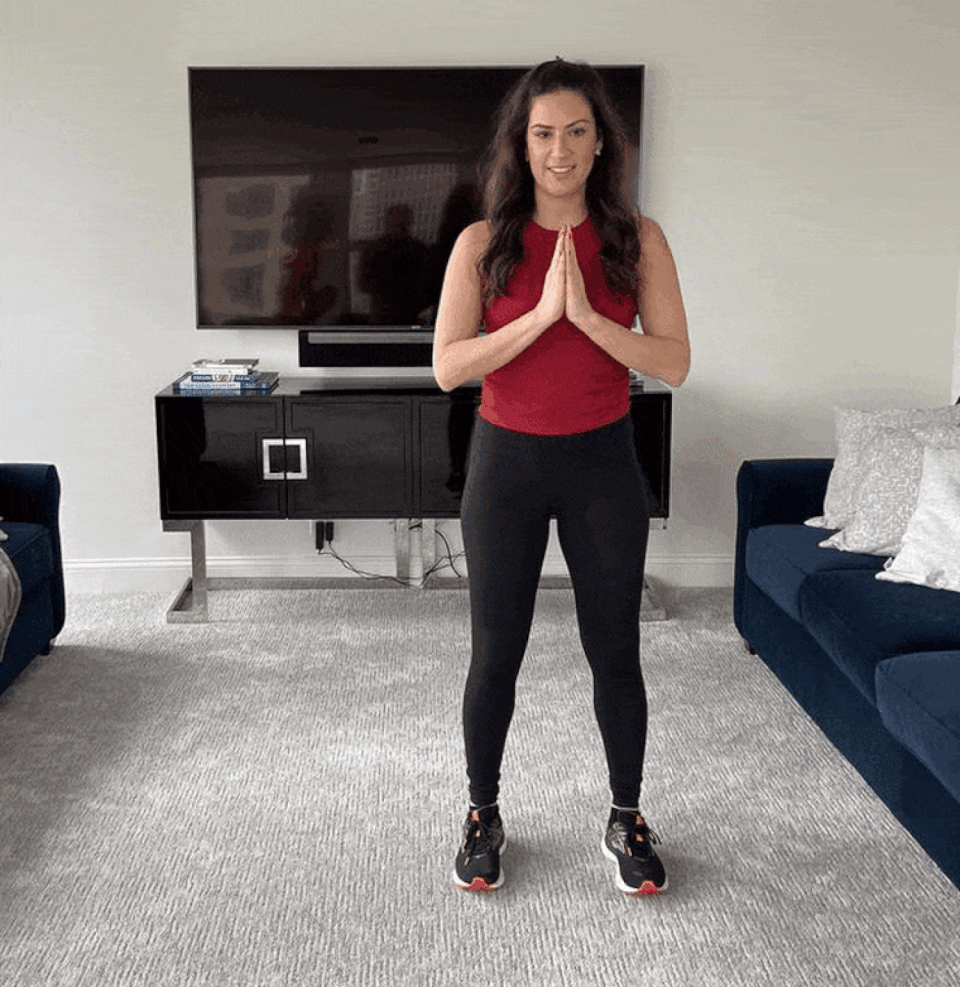

Stand tall with a straight back and your feet shoulder-width apart. Keeping your weight in your heels and your left leg straight, take a big step to the side with your right leg until the knee is bent around 90 degrees. Slowly and with control, push down through the right heel to press back up to the starting position and alternate sides. When stepping to the side and bending your knee, focus on lowering your hips (like you’re doing a squat) at the same time, and avoid leaning forward.
Curtsy lunge
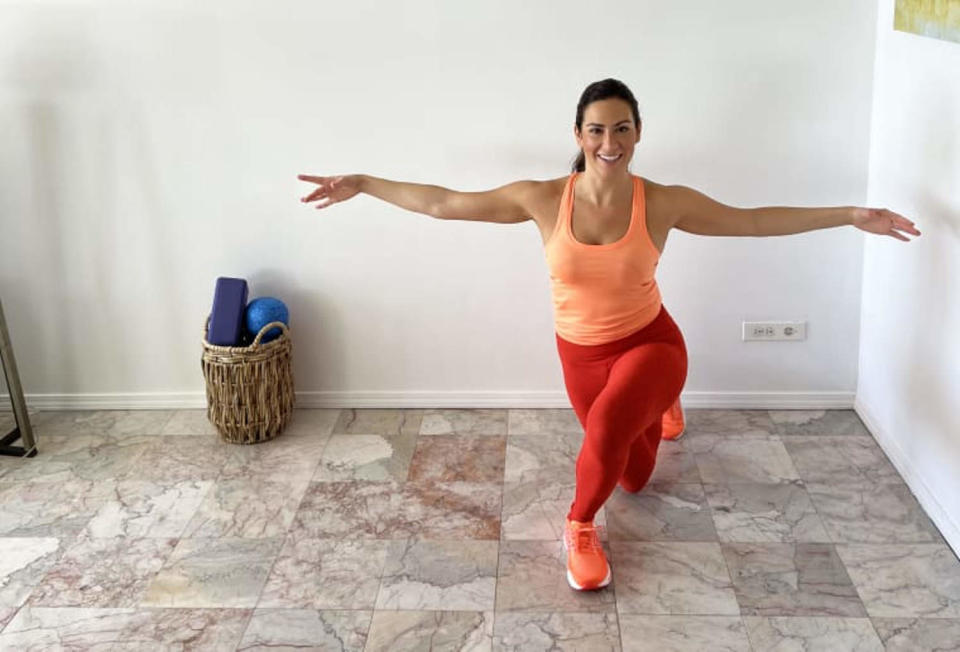

Standing with your feet as wide as your shoulders, step your right foot back behind and to the left of your left foot. Bend both knees as you lower down into a lunge in this curtsy position. Then press down through your left heel to bring your right leg back to center. Perform 10 reps and then switch sides.
Glute bridge
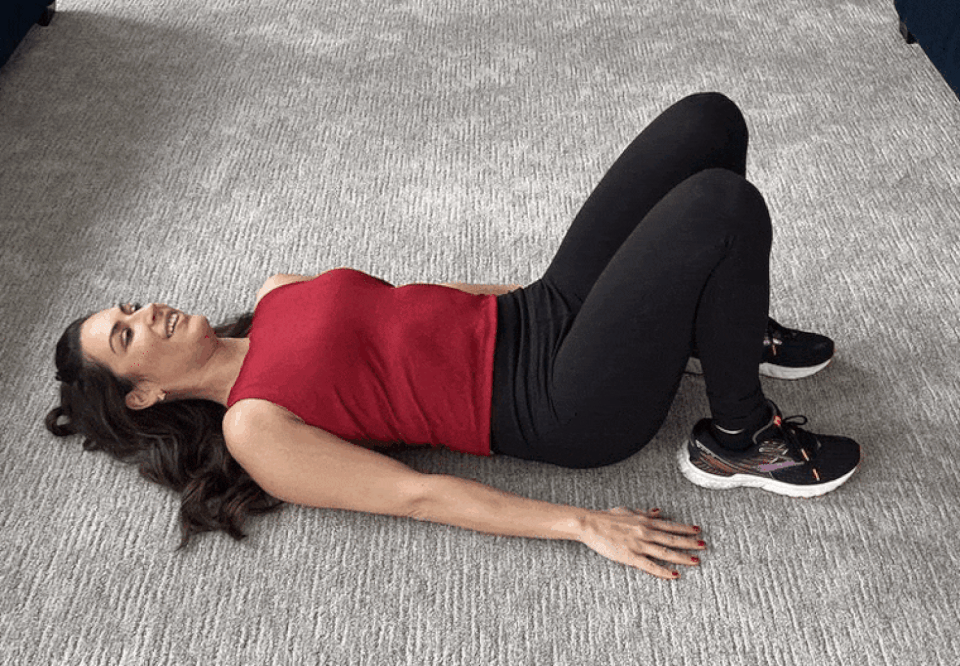

Lie on your back with your knees bent and your feet flat on the floor a few inches from your butt. Keeping your heels on the ground, lift your hips up and squeeze your glutes and hamstrings. You should form a straight line from your upper back to your knees. Pull your belly button in toward your spine, and slowly lower down one vertebra at a time. Repeat.
Single leg glute bridge
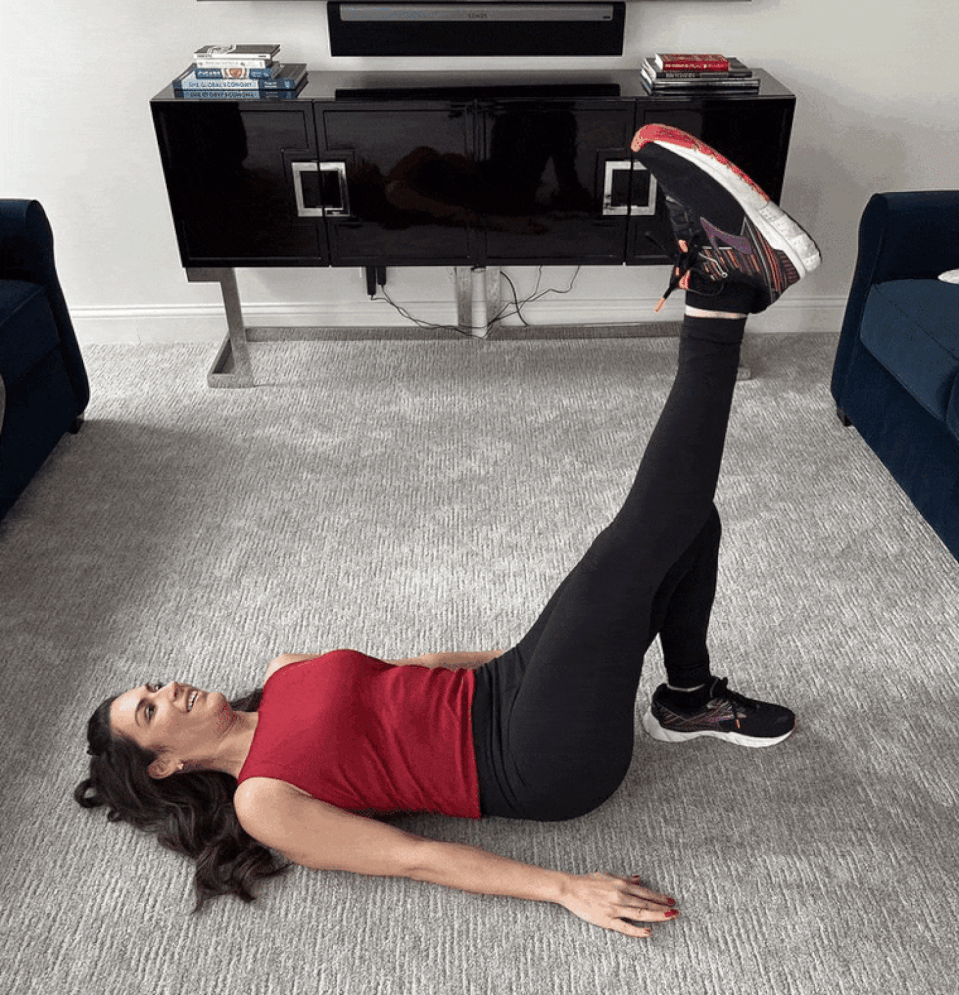

Starting in the same position as your standard glute bridge, lie on your back with your knees bent and feet flat on the floor in front of you. With this variation, start by keeping your left heel on the ground, and raise your right leg straight up in the air. Squeeze the glute and hamstring muscles, keeping your core activated as you lift your hips. Keeping your right leg raised, slowly lower your hips back to the floor. Repeat for 10 res. Then switch to the other side, keeping your right heel on the ground and raising your left leg.
Glute bridge walkout
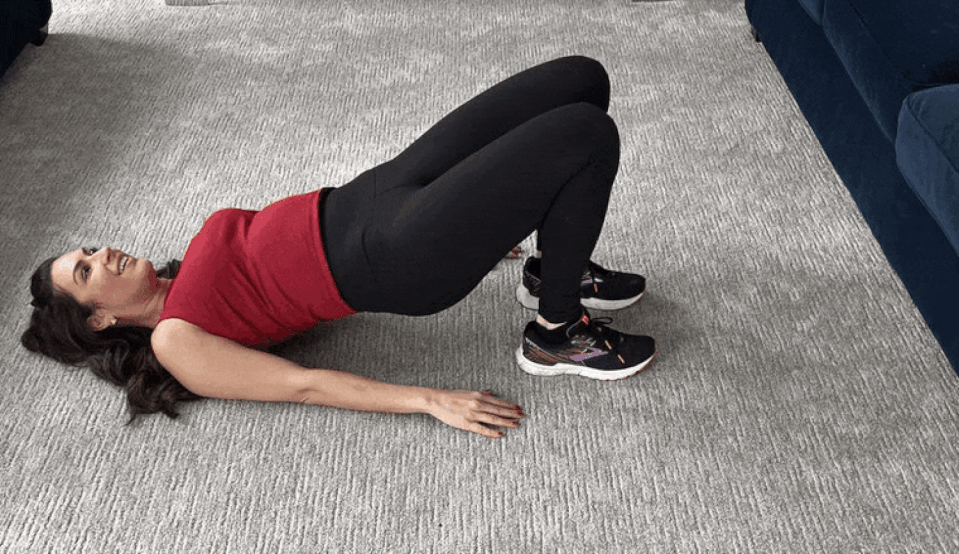

A final variation of the glute bridge, this move will start just like the original. Once your hips are up in the raised position, pause and hold for a breath. Alternating feet, slowly “walk” your legs away from your butt until the legs are almost straight. Be careful to keep your low back supported by keeping your abs engaged. Then, slowly “walk” your feet back toward you until you are back into the bridge position. Repeat.
Donkey kicks
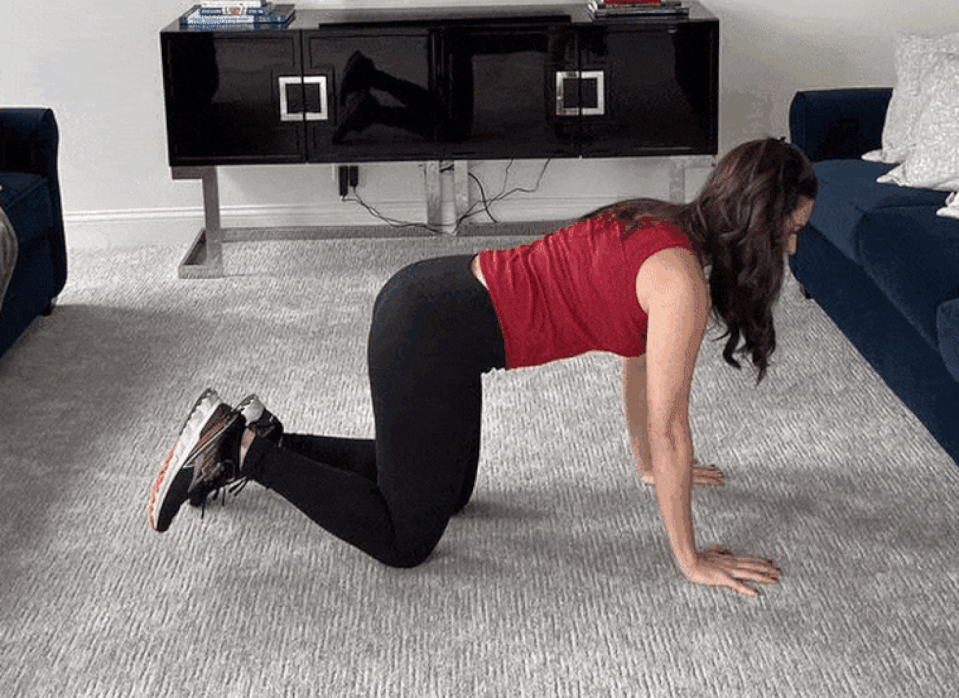

Start on all fours with your hands under your shoulders, fingers spread wide, and knees directly below your hips. Press evenly into both hands and maintain this balance throughout. Keep your back straight and abs tight. Maintaining the 90-degree bend in your right leg, kick your heel straight up toward the ceiling. Only go as far as you can without arching the back or letting your hips start to angle outward. Lower the leg back down with control and then alternate legs. To further activate the hamstring, you can squeeze a water bottle or dumbbell behind your knees.
Donkey kick into fire hydrant
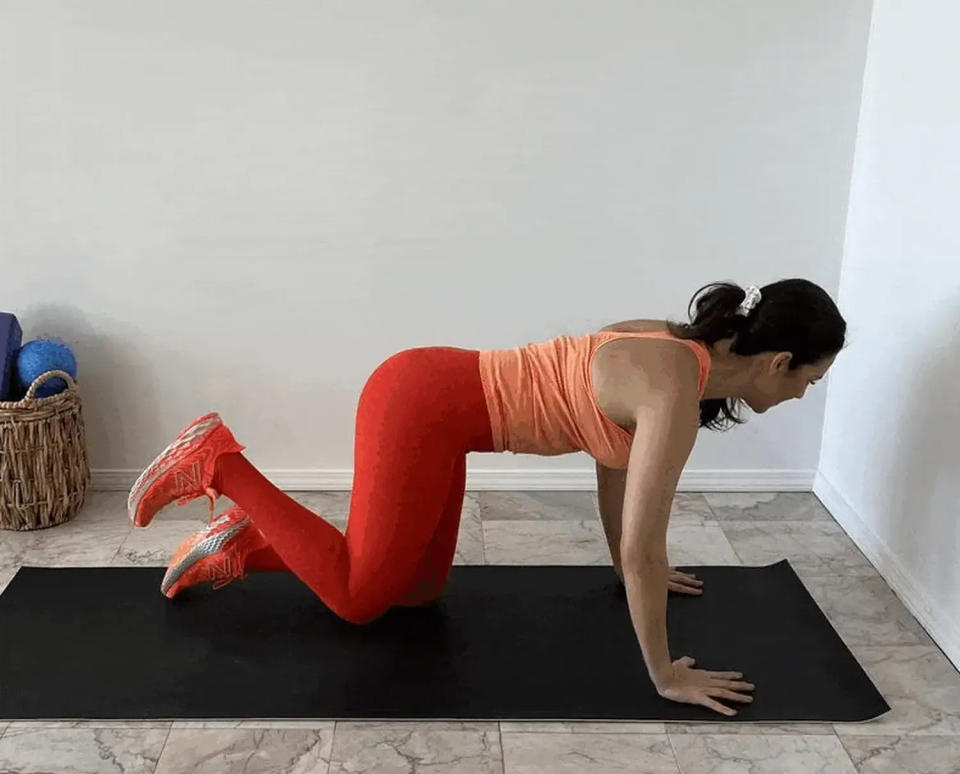

Perform the donkey kick, reaching the right leg up toward the ceiling. Then once you come back to center, immediately open the right knee up toward the side of the room, keeping the knee bent at 90 degrees, into the fire hydrant. Continue alternating, repeating 10 times before switching sides.
Reverse leg lift
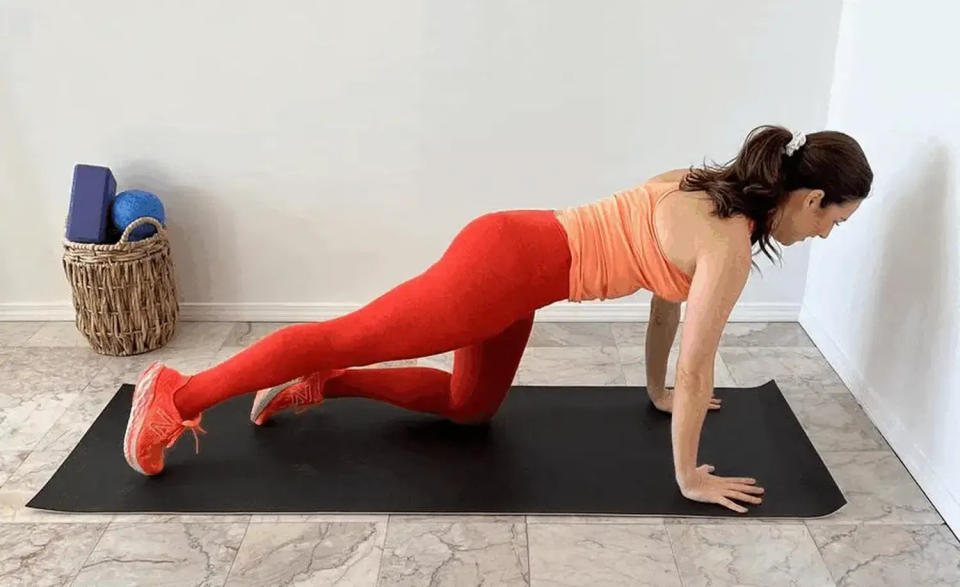

Reach your right leg behind you and straighten it. Point the toes. Then lift the leg up as high as your hip, squeezing your right glute, and lower it down. Repeat 10 times and then switch sides.
Backward leg lift into side leg lift
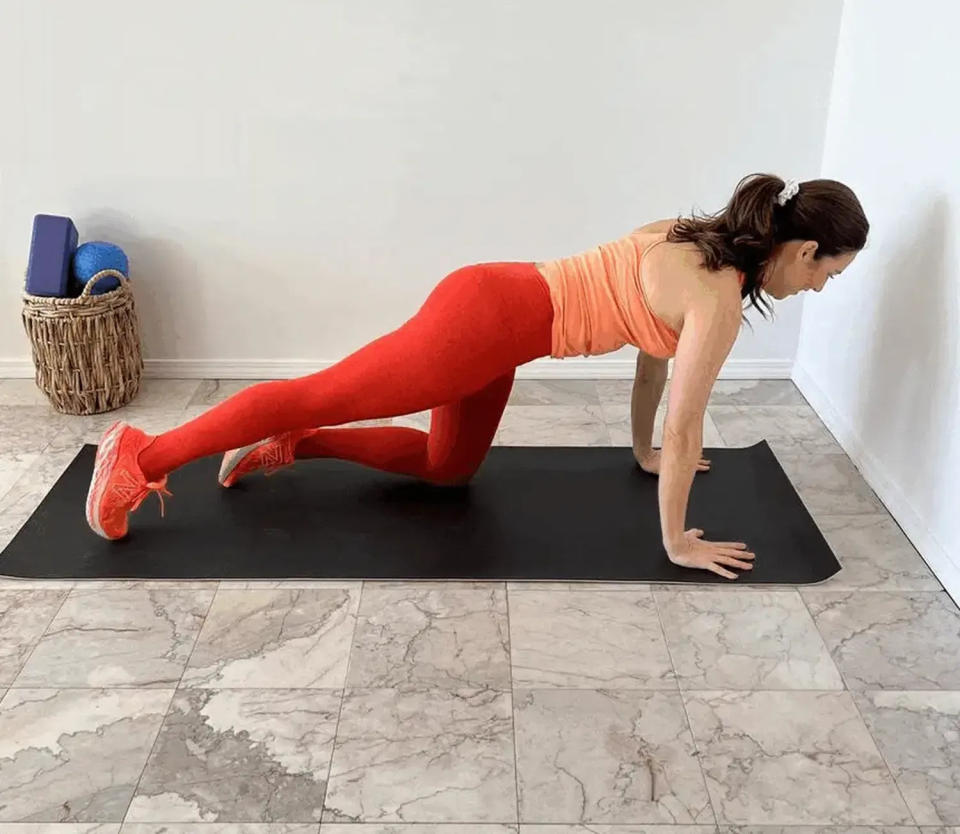

Perform the reverse leg lift. After you tap the toes down on the ground, lift the leg up and around to the right so that the leg goes out to the side of the right hip. Perform a side leg lift and then lift the leg up and back to the backward leg lift position and tap the toes onto the ground. Repeat 10 times and then switch sides.
This article was originally published on TODAY.com




